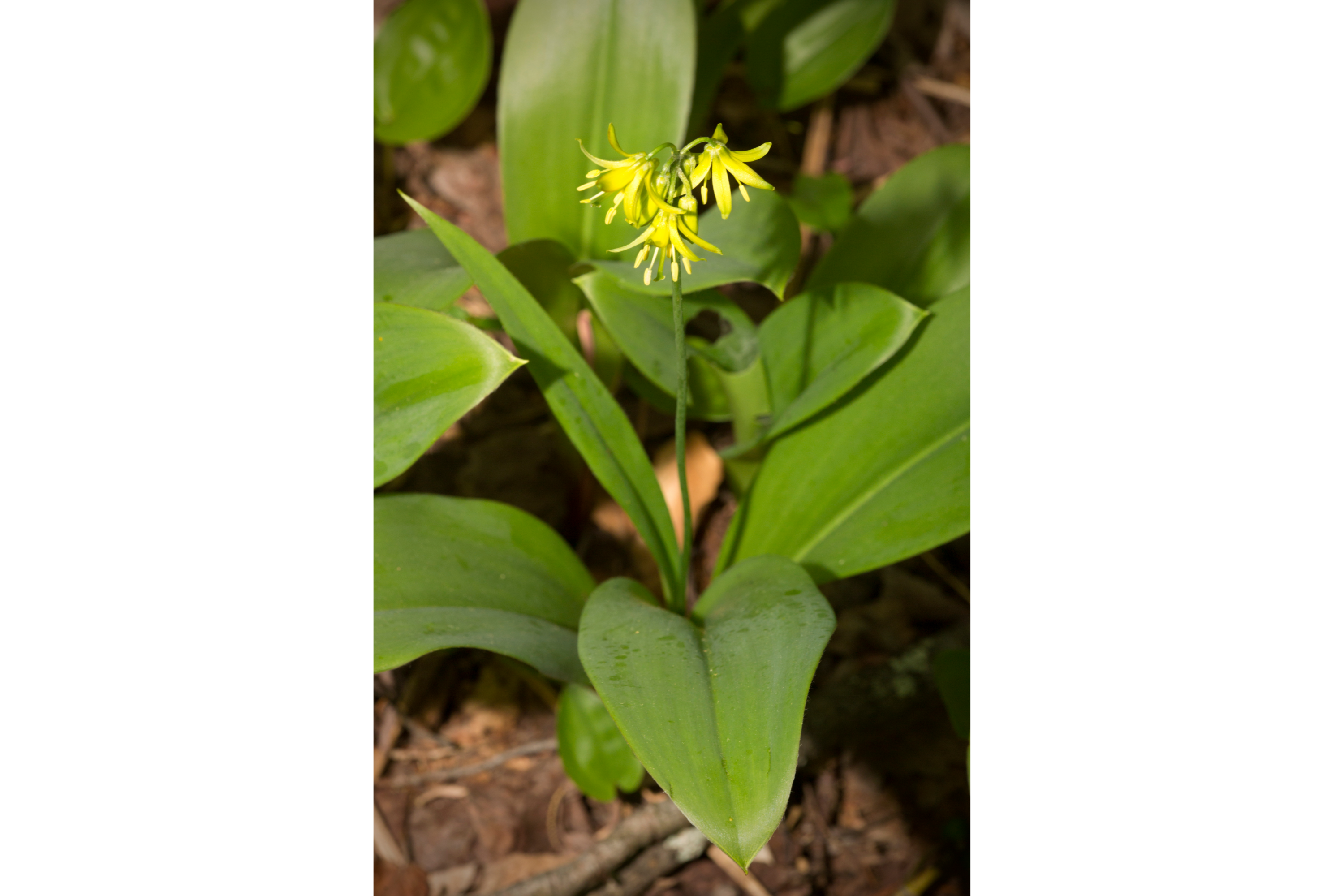Bluebead
(Clintonia borealis)

Description
Clintonia borealis is a species of flowering plant in the lily family Liliaceae. The specific epithet borealis means "of the north," which alludes to the fact that the species tends to thrive in the boreal forests of eastern Canada and northeastern United States. Clintonia borealis is commonly known as bluebead, bluebead lily, or yellow clintonia.The term "bluebead" refers to the plant's small blue spherical fruit, perhaps its most striking feature. However, the term can be misleading since all but one of the species in genus Clintonia have blue fruits (notably, the fruit of C. umbellulata is black). Thus yellow clintonia is probably a better name for C. borealis since the adjective refers to the color of the plant's flower, a unique character among Clintonia species. Compound names such as yellow bead lily or yellow bluebead lily are also in use. Other less common names include corn lily, poisonberry, or snakeberry. Some authors refer to C. borealis as Clinton's lily but that name may be more appropriate for the genus as a whole. Clintonia borealis is a small (5–10 in) perennial plant, usually found in homogeneous colonies. At full growth, a shoot has 2–4 clasping and curved, slightly succulent leaves with parallel venation. The flowers are arranged in small umbels at the extremity of a long stalk. They have 6 stamens and 6 yellow tepals (i.e. very similar sepals and petals). In rare cases more than one umbel is found on a shoot or shoots from a clone. The fruits are small dark blue, lurid berries, which are semi-poisonous. A white-berried form (f. albicarpa) also exists. The plant reproduces via seed or vegetatively by underground rhizomes. By either method, the plants are slow to spread. One colony often covers several hundred square meters. Clintonia borealis is a wide-ranging species in eastern North America, from Newfoundland and Labrador across New England into the Great Lakes region west to Manitoba and Minnesota. Its range extends southward into the Appalachian Mountains where it is allopatric with C. umbellulata, that is, the ranges of the two species do not significantly overlap but are immediately adjacent to one another. In the Appalachians, C. umbellulata prefers hardwood forests less than 1,000 m (3,281 ft) while C. borealis populates coniferous or mixed forests up to 1,600 m (5,249 ft). C. borealis is globally secure but threatened in Maryland and Tennessee. It is an endangered species in Ohio and Indiana.
Taxonomic tree:







